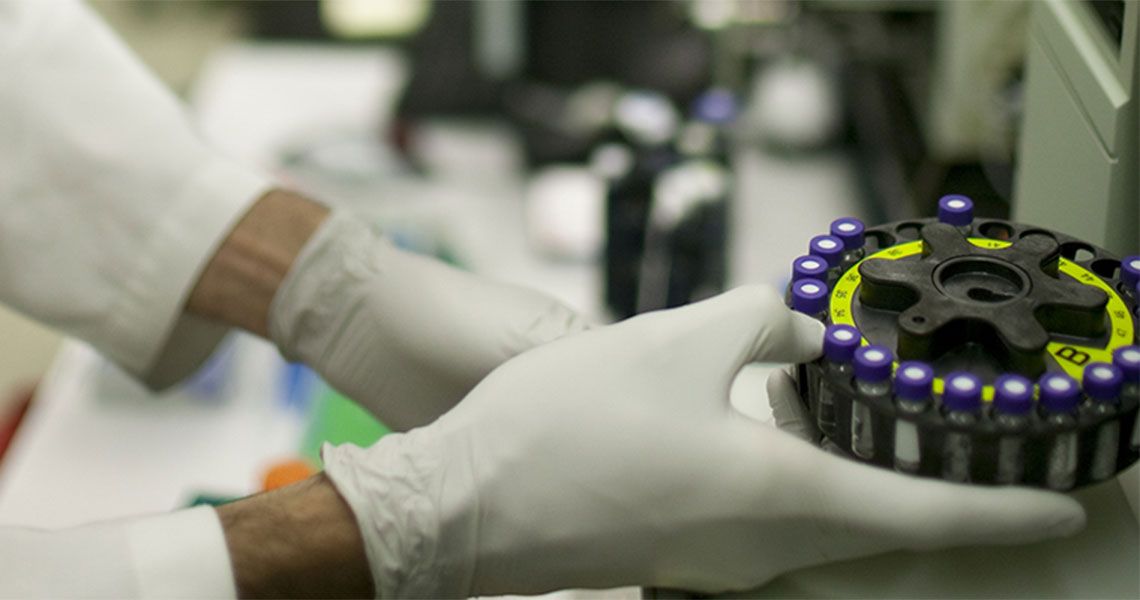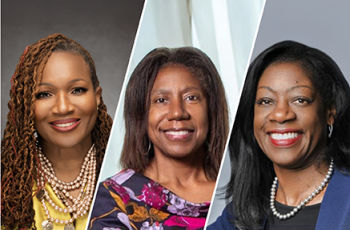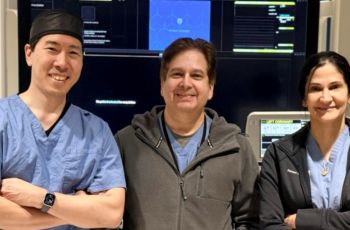Connie Mahon, M.S., believes in the building blocks of education: starting with the basics and gradually layering more advanced knowledge. It’s a philosophy she’s espoused in the classroom and in the clinical microbiology laboratory, and it’s one she embraces as she begins tackling the sixth edition of a textbook she co-edits, “Textbook of Diagnostic Microbiology.” Mahon laid the cornerstone of her own career at the University of Texas Health Science Center at San Antonio, where she served as an associate professor and director of undergraduate programs in the Department of Clinical Laboratory Science. After nearly two decades in San Antonio, she relocated to Washington, D.C. and has held leadership roles at the Walter Reed Army Medical Center Clinical Laboratory Science Program and at the Food and Drug Administration (FDA). Despite her shift from the laboratory to academia, and then to the realms of organizational and workforce development, Mahon has continued to teach. Since 2001, she has served as an adjunct assistant professor of clinical research and leadership at the GW School of Medicine and Health Sciences. Here, the self-described voracious reader — she’s making her way through the The Century Trilogy and Outlander novels —discusses her immersion in clinical microbiology and her love for learning:
Your career in academia originally started at the University of Texas Health Science Center at San Antonio, but you made a career shift when you moved to the Washington, D.C. area; what was the transition like?
One of the positions I took [after moving from Texas] was as a clinical microbiology reviewer at the Division of Anti-Infective Products in the Office of New Drugs at the FDA. That was quite a switch for me, having spent a lot of years in the clinical microbiology laboratory and having spent time teaching microbiology.
It’s a completely different venue; there, as a reviewer, my role in the drug review process was to determine drug efficacy and safety. This was a new experience for me; I was back to utilizing basic and applied science and, at the same time, applying my experience in the clinical laboratory. In the drug review and approval process, risk-to-benefit assessment is critical. My concern when I first accepted the position was that I knew little about the drug regulations, evaluation and approval process, and that’s where I learned a lot. I learned about drug law and the New Drug Application process as well as relearned certain technical disciplines such as biostatistics, epidemiology, and pharmacokinetics. It was fascinating work.
What brought you to GW once you were in the area?
When Sylvia Silver, D.A., then program director for the clinical laboratory science (CLS) program at GW, heard that I had moved into the area, she mentioned that she was starting a distance-learning program. I told her that I had just developed a web-based microbiology course before I left Texas, and I was willing to work with her, eventually teaching the advanced medical microbiology course in the CLS Distance Education Program. That was in 2001-02, while I was serving as the director of the U.S. Army Clinical Laboratory Officers Clinical Laboratory Science Program at Walter Reed Army Medical Center. I’ve been teaching it ever since.
Why was it important to you to teach at SMHS?
I love teaching and working with students. I love clinical microbiology. Teaching at SMHS helps me keep in touch with that discipline now that I have been out of the clinical laboratory and have been engaged in organizational and workforce development.
I feel fortunate and appreciate the opportunity that SMHS has given me over the years to be involved in teaching and mentoring medical laboratory sciences students in the GW program. I’ve missed the interaction with the students.
Has your time at the FDA changed your approach to the classroom?
If anything, the time that I spent at the FDA strengthened my teaching philosophies and beliefs: 1) students need strong foundational knowledge and skills and a clear understanding for why they need those skills; 2) students learn problem solving and critical-thinking skills using a case-based approach; and 3) they expand their learning beyond the clinical laboratory.
Describe your textbook.
The first edition of the Textbook of Diagnostic Microbiology, published in 1995, evolved from my co-editor, George Manuselis Jr., M.A., Professor Emeritus in the Medical Technology Division at the Ohio State University. We shared the same challenge of finding a textbook that was appropriate for entry-level clinical laboratory practitioners. When I reviewed George’s book proposal, I said “Wow, if I were to write a textbook, this is the way I would write it.”
[With clinical microbiology] there’s really a lot of information, and it’s always a challenge for the students to figure out what’s really important. Since the objective of the Textbook of Diagnostic Microbiology is to provide a foundation for students, the organisms discussed are limited to those that are medically important and commonly encountered. Because what entry-level clinical laboratory scientists need is to fully understand the basic principles of clinical microbiology, and how such information is used in identifying medically important micro-organisms, students learn problem solving and critical-thinking skills through case studies. Students are shown how to apply foundational principles in establishing diagnoses of infectious diseases. With that in mind, the building-block approach was used in writing the Textbook of Diagnostic Microbiology. The goal is to provide the students with a firm foundation and a means for developing the skills that they need.
Is it different teaching as an adjunct rather than as a full-time faculty member?
As a life-long educator, I don’t see any difference between being an adjunct and a full-time faculty member, except that I have less time that I can devote because I hold another position somewhere else. Nevertheless, the goals and outcome we strive for should remain the same: prepare the next generation and future leaders of the clinical laboratory science profession.
Carl Sagan, I was told, once wrote about how as civilization progressed, we moved ourselves away from the stars by building the walls of the cities around us. Children would grow completely unaware of what was around them, what was beyond those walls. Adjunct or full-time, I strive to keep off the walls that would limit the learner's view of the stars; I guide them out of the cities to find what is theirs to find, discover what it means to each of them to be a leader and to be part of something spectacular.
The Department of Clinical Research and Leadership offers web-based bachelor’s, master’s, graduate certificate, and post-baccalaureate certificate programs for professionals or practitioners interested in formalizing their educational accomplishments. The program’s dedicated faculty prioritize the fundamental concepts of adult learning and encourage collaboration, experiential learning, creative thinking, and self-direction.



